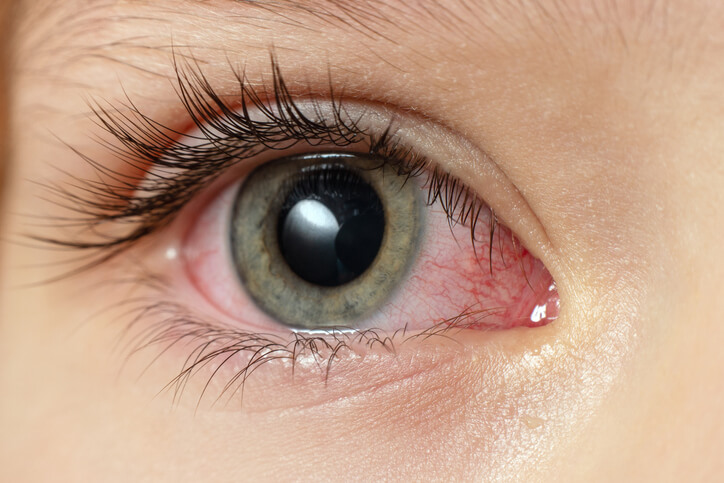Debunking Pink Eye Myths: What You Need to Know
Pink eye is one of the most common and most treatable eye conditions. This highly contagious condition gets its name from the way it can turn the membrane that covers the white of your eyes a pink hue. Despite being such a common condition, there are still many pink eye myths out there that can put people at further risk of catching it or delaying treatment. Here’s what you need to know about pink eye and the most common myths surrounding it.
What is Pink Eye?
Pink eye, also called conjunctivitis, is an inflammation of the conjunctiva, the membrane covering the white part of your eyes or the sclera. It can be infectious or noninfectious, with the most common type of short-term pink eye being the result of a virus. A few different viruses can cause this condition, but those in the adenovirus family are the most frequent culprits.
Bacterial pink eye is also significantly common. The bacteria that cause strep throat and staph infections can also cause pink eye. Of non-infectious causes, allergens are the most frequent. You could develop conjunctivitis if exposed to pollen, mold, or any other substances that trigger allergic reactions.
 Telltale symptoms that you may have pink eye include:
Telltale symptoms that you may have pink eye include:
- Burning eyes
- Redness or a pink hue in the white of your eyes
- Eye discharge
- Itchy eyes
- Feeling like there’s something in your eyes
- Light sensitivity
- Swollen eyelids
- Blurred vision
- Mild eye pain
If you have bacterial or viral pink eye, you can also experience a fever. With viral pink eye, you can also have a sore throat and nasal discharge.
6 Common Pink Eye Myths
The stigma attached to pink eye is often rooted in myths. When you know the facts about pink eye, you can better protect yourself and your family from catching it — and ensure you heal as quickly as possible if you experience it. Take a closer look at the truth behind these common pink eye myths.
Myth 1: Only Children Get Pink Eye
One of the most common pink eye myths is that it only affects children. However, pink eye affects both children and adults, and even babies can suffer from it. Bacterial pink eye is more common in children, while viral and allergic pink eye tend to occur most often in adults. However, people of all ages can catch all types of conjunctivitis.
Myth 2: Pink Eye Always Requires Antibiotics
If you suffer from bacterial conjunctivitis, you need antibiotics to shorten the infection and relieve symptoms. If you have viral or allergic pink eye, antibiotics won’t help. Viral pink eye usually resolves on its own and doesn’t require medications. The exceptions are if a sexually transmitted infection causes it, the varicella-zoster virus or the herpes virus. In those instances, you would require an antiviral. For allergic pink eye, over-the-counter antihistamine eye drops are usually enough.
Myth 3: Pink Eye Is Only Transmitted Through Direct Contact
This is one of the most prevalent pink eye myths. While it’s true that pink eye is often transmitted through direct contact, like shaking hands with someone with conjunctivitis who touched their eyes, there are many other ways of catching viral or bacterial pink eye.
Viruses can live a long time on surfaces, including door knobs, eye makeup, and washcloths. The same applies to bacterial pink eye. Allergic pink eye is the exception since it occurs as a response to an allergen that triggers your body’s allergic response.
Myth 4: All Pink Eye Home Remedies Are Dangerous
This is another of the most persistent pink eye myths — and one that could affect how long you experience symptoms. Placing cold washcloths over your eyes, for example, is a home ready that is not only safe but can also soothe your eyes. Just make sure that no one else uses that washcloth.
Of course, if you’re unsure whether a home remedy is a good option, you should consult your doctor before trying it.
Myth 5: You Can’t Reinfect Yourself
If you reuse an item you used while you had an active infection, you can reinfect yourself. For example, this can be a particular concern for people who wear eye makeup. You must toss away any applicators or products you used when you had pink eye because the virus or bacteria can survive on them.
Myth 6: You Can’t Be Misdiagnosed With Pink Eye
Pink eye myths like this one can put your health in danger because it is possible to misdiagnose a more serious condition for pink eye. You could have a corneal abrasion or even keratitis, which is an infection that could result in vision loss if it’s not treated quickly enough. Iritis is another serious infection that can look like pink eye.
When to See Your Eye Doctor
Viral conjunctivitis doesn’t usually require a visit to a doctor, but bacterial pink eye means going to your primary care physician for antibiotics. Some instances, however, do require visiting an eye doctor. If you experience severe pain, blurry eyes that don’t improve, severe light sensitivity, and intense redness, make an appointment as soon as possible.
You should also watch for high fevers. Although bacterial pink eye usually causes only a mild rise in temperature, a high fever can indicate a more serious infection.
If you have concerns about pink eye or other eye conditions, visiting your optometrist is important. The experts at Looking Glass Optical have experience diagnosing and treating a wide range of eye conditions, and we take pride in helping patients in Maryland and beyond enjoy better eye health.
Looking for further information on pink eye myths? Looking Glass Optical can help! Contact our team to schedule an appointment today.
Share
